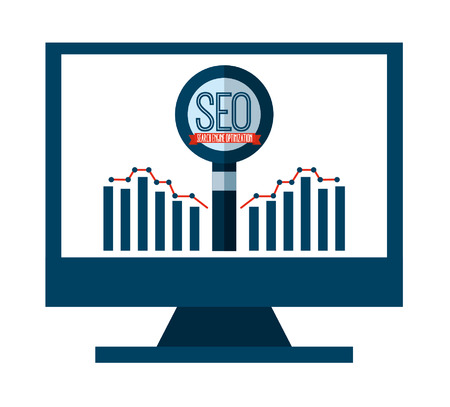Introduction to Evolving Ranking Factors
In the fast-paced world of digital marketing, understanding search engine ranking factors is more important than ever. As we head into 2025 and beyond, Google and other major search engines continue to refine their algorithms, making regular updates that can dramatically impact which websites rise or fall in search results. These changes are often driven by shifts in user behavior, advances in technology, and the increasing emphasis on providing relevant, high-quality content. For marketers and business owners targeting American audiences, staying current with these updates isn’t just helpful—it’s critical for maintaining visibility, driving organic traffic, and staying ahead of competitors. Failing to adapt your SEO strategy to reflect the latest ranking factors can mean missing out on valuable opportunities to connect with customers and grow your brand online. In this article, we’ll break down the most crucial ranking factors shaping search engine success in 2025 and offer practical insights for keeping your SEO game strong in an ever-evolving landscape.
2. Core Web Vitals and Page Experience
As we move into 2025, Google continues to place a significant emphasis on user experience through Core Web Vitals and overall page experience signals. These factors are now essential components in determining how your website ranks in search engine results, especially as users demand faster, smoother, and more reliable browsing across all devices.
What Are Core Web Vitals?
Core Web Vitals are a set of specific metrics introduced by Google to measure key aspects of user experience on the web. The three primary elements include:
| Metric | Description | Optimal Value |
|---|---|---|
| Largest Contentful Paint (LCP) | Measures loading performance, specifically how quickly the largest content element becomes visible to users. | <2.5 seconds |
| First Input Delay (FID) | Measures interactivity, or how fast your site responds when users first interact with it. | <100 ms |
| Cumulative Layout Shift (CLS) | Assesses visual stability by tracking unexpected layout shifts during page load. | <0.1 |
The Role of Site Speed
Site speed is no longer just a nice-to-have—it’s a foundational ranking factor. A slow-loading website leads to higher bounce rates and diminished user satisfaction. In the U.S., where high-speed internet is widely accessible, users expect near-instantaneous load times. Investing in server upgrades, optimizing images, and leveraging modern web technologies like lazy loading can make a noticeable difference in both rankings and conversions.
Mobile-Friendliness Is Non-Negotiable
The majority of searches in America happen on mobile devices. Google’s mobile-first indexing means your site’s mobile version takes precedence over desktop for ranking purposes. Responsive design, touch-friendly navigation, and streamlined mobile experiences are now must-haves rather than afterthoughts.
Interactivity & Visual Stability Matter More Than Ever
If your site lags when users tap or click—or if buttons jump around as ads or images load—you risk frustrating visitors and losing valuable traffic. Minimizing script execution time and setting size attributes for media elements helps ensure that your site feels seamless and reliable, which directly impacts your search visibility.
The Bottom Line for 2025
In summary, Core Web Vitals and page experience signals have moved from secondary considerations to front-and-center ranking factors. Prioritizing site speed, mobile usability, interactivity, and visual stability isn’t just good for SEO—it’s essential for meeting American consumers’ expectations and staying ahead in the competitive search landscape.

3. Content Quality and Relevance
Google’s search algorithm has evolved significantly, and in 2025 and beyond, content quality and relevance remain at the heart of ranking factors. The search engine is laser-focused on surfacing high-value content that demonstrates expertise, authority, and trustworthiness (E-A-T). This means that simply stuffing keywords into your pages is no longer enough—your content must genuinely address user intent with accurate, well-researched information. Google’s algorithms are increasingly adept at understanding nuance, context, and the overall value a piece of content provides to its audience. To stay competitive, brands should prioritize creating original content that answers real user questions, solves problems, and adds unique perspectives. Incorporating trustworthy sources, citing data, and keeping information up-to-date can further boost credibility. In short, the path to strong rankings in today’s landscape runs through delivering authoritative content that users—and Google—can trust.
4. Advancements in AI and Semantic Search
The landscape of search engine ranking is rapidly evolving, with artificial intelligence (AI), machine learning, and natural language processing (NLP) playing pivotal roles in shaping how search results are determined. Gone are the days when keyword stuffing could easily manipulate rankings. In 2025 and beyond, semantic relevance—how well your content actually answers a user’s intent—matters far more than just matching keywords.
From Keywords to Meaning: The Rise of Semantic Search
Search engines like Google have become incredibly sophisticated at understanding the context behind queries. Through AI-driven algorithms such as BERT and MUM, search engines can interpret synonyms, related concepts, and even user sentiment. This shift means that simply repeating target phrases won’t cut it anymore; you need to create content that aligns with what people truly want to know.
Key Components of Modern Semantic Search
| Factor | Description |
|---|---|
| Contextual Understanding | Interpreting the meaning behind words based on surrounding text and user history |
| User Intent Analysis | Identifying what users are really looking for, whether informational, navigational, or transactional |
| Entity Recognition | Recognizing people, places, brands, and concepts within content to connect related information |
| Content Relevance | Evaluating how well content addresses the actual question or need of the user |
Why AI Matters for Rankings Now
AI-powered systems can now assess the depth, clarity, and trustworthiness of your content. They analyze everything from sentence structure to topical coverage, ensuring that only the most relevant and comprehensive pages surface at the top of search results. As a result, strategies focused on answering real questions and providing value are rewarded over those relying on outdated tactics.
Best Practices for 2025 SEO Success
- Write for people first, not just algorithms—think about what your audience needs.
- Cover topics comprehensively rather than obsessing over exact-match keywords.
- Use structured data to help search engines understand your content’s entities and context.
- Leverage conversational language that matches how users naturally ask questions.
The bottom line: To rank high in 2025 and beyond, embrace advancements in AI and focus on creating semantically rich content that genuinely serves your audience’s intent.
5. E-E-A-T: Experience, Expertise, Authoritativeness, Trustworthiness
Understanding E-E-A-T and Its Significance in 2025
As Google’s algorithms continue to evolve, E-E-A-T—standing for Experience, Expertise, Authoritativeness, and Trustworthiness—has become a cornerstone of search engine ranking factors, especially as we head into 2025 and beyond. This set of criteria is not just a guideline for content creators but a critical standard for determining which websites deserve top rankings, particularly in sensitive niches like YMYL (Your Money, Your Life), where accurate information can have real-world consequences.
The Impact of E-E-A-T on YMYL Websites
For YMYL sites—covering topics such as finance, health, legal advice, and safety—the bar is even higher. Google places a premium on signals that demonstrate authentic experience and expertise from real practitioners or credentialed professionals. Authoritativeness is measured by the reputation of both the content creator and the website as a whole, while trustworthiness hinges on transparent business practices, secure site protocols (like HTTPS), and clear author profiles.
How to Build Credibility with Readers and Search Engines
Establishing E-E-A-T requires a multi-layered approach:
- Showcase Real-World Experience: Use author bios that highlight hands-on experience or certifications relevant to your niche. Share case studies or first-person accounts to add authenticity.
- Demonstrate Expertise: Regularly update your content to reflect the latest industry standards. Include references to authoritative sources and cite scientific studies or expert opinions where appropriate.
- Build Authoritativeness: Earn backlinks from reputable sites in your field and participate in industry forums or events. Positive reviews and mentions across trusted platforms also boost your perceived authority.
- Enhance Trustworthiness: Ensure transparency by providing detailed contact information, privacy policies, and clear disclosures about affiliations or sponsored content. Encourage user feedback and address concerns promptly to foster trust with both users and search engines.
The Bottom Line for 2025 Rankings
E-E-A-T isn’t a simple checkbox but an ongoing commitment to quality, transparency, and relevance. As algorithms grow more sophisticated at evaluating these signals—especially for YMYL sites—investing in genuine expertise and trust-building measures will be essential for achieving and maintaining top search rankings in 2025 and beyond.
6. Technical SEO and Structured Data
As we look ahead to 2025 and beyond, technical SEO remains a cornerstone for achieving top search engine rankings. Without a solid technical foundation, even the most compelling content can get buried in the SERPs. Let’s break down the key technical priorities that are shaping search visibility in the evolving digital landscape.
Schema Markup: Speaking Google’s Language
Schema markup is more than just an SEO buzzword; it’s how you communicate directly with search engines about your site’s content. By leveraging structured data through schema, websites can enhance their listings with rich snippets—think star ratings, event dates, FAQs, and more. These enhancements not only boost click-through rates but also help Google understand the context and intent behind your content.
Site Architecture: Building for Both Users and Bots
A well-organized site architecture ensures that both users and search engine crawlers can navigate your website efficiently. In 2025, this means prioritizing clear URL structures, logical internal linking, and mobile-first design. Flat architectures—where important pages are never more than a few clicks from the homepage—help distribute link equity evenly and improve indexation rates across your site.
Crawlability: Removing Roadblocks
If search engines can’t crawl your site, your rankings will suffer—plain and simple. Optimizing robots.txt files, creating comprehensive XML sitemaps, fixing broken links, and minimizing duplicate content are all essential steps for maximizing crawlability. Regularly monitoring crawl stats in Google Search Console ensures that any issues are caught before they impact your visibility.
The Expanding Role of Structured Data
Structured data isn’t just about rich snippets anymore—it’s becoming integral to voice search optimization, AI-driven search results, and personalized experiences. As Google relies more on machine learning to interpret content, structured data provides the clarity needed for accurate indexing and ranking. In fact, sites that consistently implement up-to-date schema types will have a leg up as new SERP features roll out.
Key Takeaway
Investing in technical SEO and structured data today sets your website up for success tomorrow. As algorithms evolve, these foundational elements ensure your content is discoverable, understandable, and positioned to capitalize on every new opportunity search engines offer.
7. Local SEO and Personalized Search
As we look ahead to 2025 and beyond, local SEO and personalized search have become defining factors in the way search engines deliver results. Google and other platforms are increasingly prioritizing content that is both geographically relevant and tailored to individual user preferences. This means that businesses must not only focus on broad ranking strategies but also zoom in on their local presence and audience-specific intent.
The Rise of Localized Search
With the proliferation of mobile devices, users expect search results that reflect their immediate surroundings. Whether searching for a coffee shop, plumber, or event, people want answers that are nearby and accessible. Search engines use signals like geolocation, local citations, Google Business Profile optimization, and customer reviews to determine which businesses show up in the coveted “local pack.”
Key Tactics for Improving Local Visibility
- Google Business Profile Optimization: Claim and optimize your profile with accurate details, photos, business hours, and regular updates.
- Local Citations: Ensure consistency of your business name, address, and phone number (NAP) across directories.
- Localized Content Creation: Develop blog posts, landing pages, or resources specific to your city or neighborhood.
- Encourage Reviews: Proactively ask happy customers for reviews and engage with them—positive ratings boost both trust and rankings.
Personalized Search: Catering to Audience Intent
Search engines now leverage AI and machine learning to interpret user behavior and deliver customized results. Factors such as previous searches, browsing history, device type, and even demographic information shape what each person sees. To succeed, brands should:
- Segment Content by User Intent: Identify whether your audience seeks information (“how-to” content), wants to make a purchase (product pages), or is comparing options (reviews).
- Leverage Structured Data: Implement schema markup so search engines better understand your offerings and serve rich results to relevant users.
- Create Dynamic Experiences: Use personalization tools on your site to recommend products or articles based on visitor behavior.
The Future: Hyper-Local & Hyper-Personal
The intersection of local SEO and personalization will only intensify as technology advances. Embracing these trends means understanding your community’s unique needs while delivering tailored experiences at scale. For businesses aiming for top rankings in 2025 and beyond, a robust local strategy paired with audience-centric content isn’t just smart—it’s essential.


